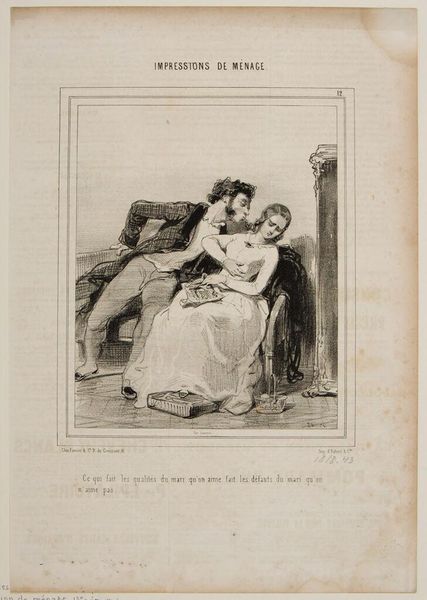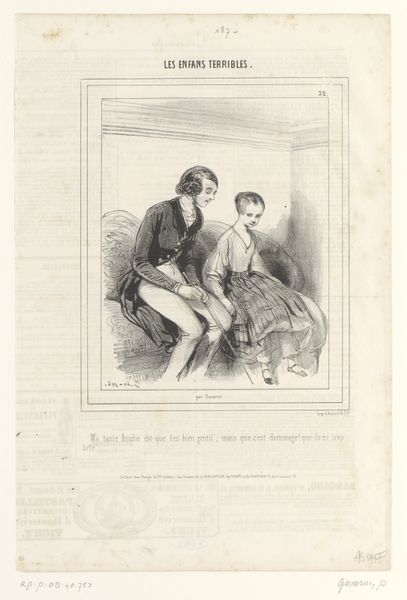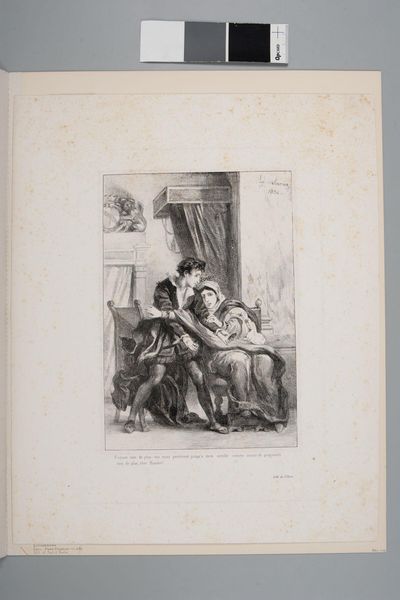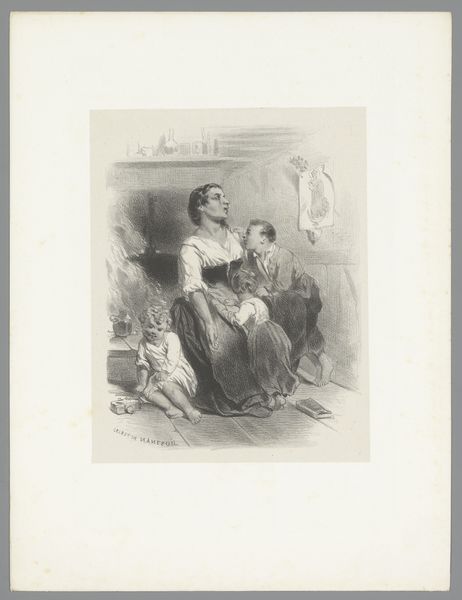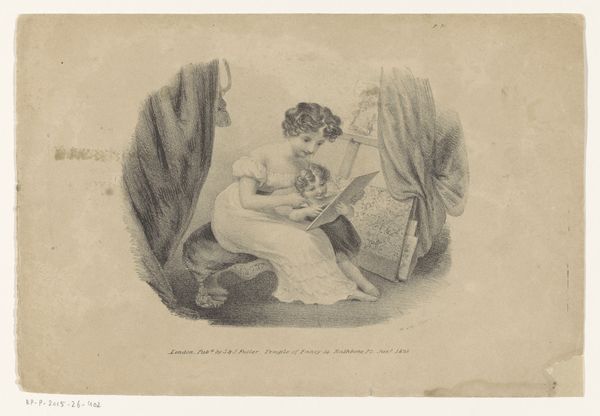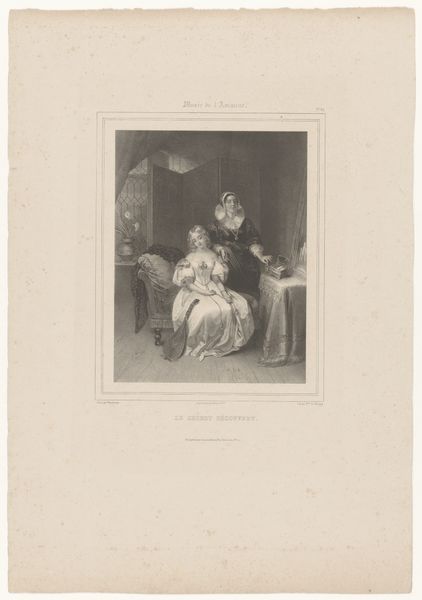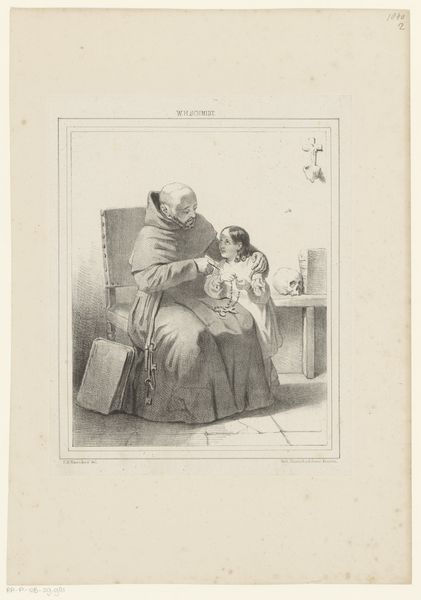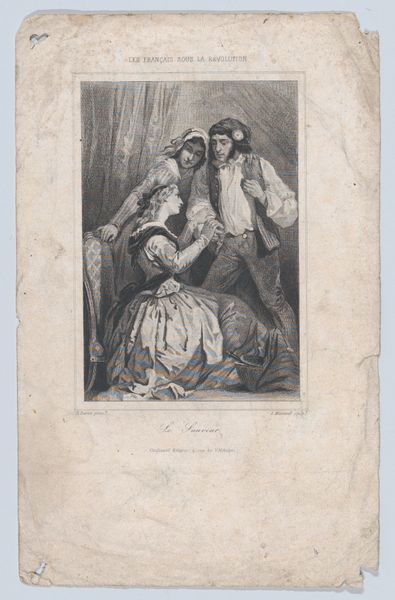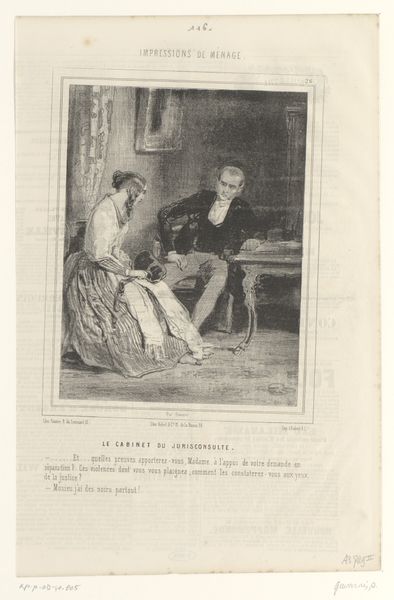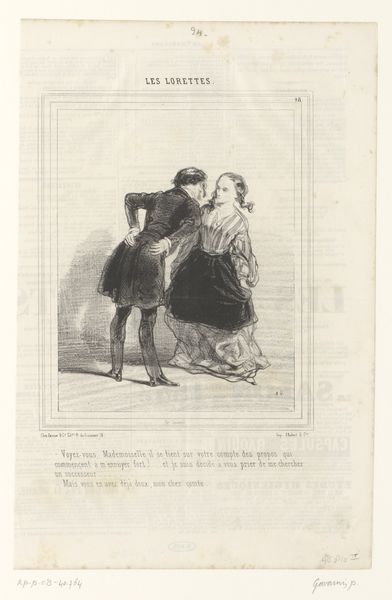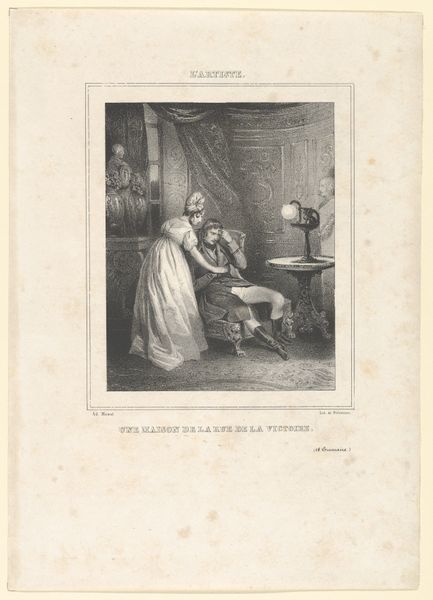
print, etching
# print
#
etching
#
caricature
#
old engraving style
#
figuration
#
romanticism
#
line
#
genre-painting
Dimensions: height 363 mm, width 236 mm
Copyright: Rijks Museum: Open Domain
Curator: This etching by Paul Gavarni, titled "Man probeert zijn onwillige vrouw te kussen," which translates to "Man tries to kiss his unwilling wife," dates to 1843. Editor: My initial impression is one of slightly uncomfortable comedy. The contrast between the man's forceful posture and the woman's clear disinterest is palpable, even through the print's aged texture. Curator: Indeed, the stark lines characteristic of etching really emphasize that contrast. Observe how the artist utilizes line weight and density to render the man's exaggerated features and pleading gesture against the woman’s more subdued, almost resistant posture. It's a fascinating study in the formal dynamics of tension. Editor: What strikes me is how this image speaks to 19th-century gender roles and expectations within marriage. The imbalance of power is visually prominent. Considering this piece would have been widely circulated through print media, its social commentary becomes even more impactful. Curator: Absolutely. The composition guides our eye to key areas – notice the cascade of her dress, subtly deflecting from his embrace. This serves both as a stylistic choice, lending a dramatic flourish, and as a powerful symbol of the rejection that is a major subject of the piece. Editor: It's fascinating to consider this artwork's reception back then. Was it meant to be humorous, critical, or both? Did it challenge or reinforce societal norms concerning marital affection and consent? These questions bubble up when one views this in context. Curator: Analyzing this etching purely through its lines and tonal values allows us to see how form dictates the work’s capacity to evoke emotional responses like discomfort and amusement. The diagonal lines driving through his figure towards her versus the softer round shapes encompassing her convey it without explicitly showing the event itself. Editor: By bringing our understanding of historical context into the dialogue, the simple print becomes not just an artwork, but a social document reflecting complicated domestic realities and gender dynamics of its era. Curator: Indeed, considering the etching, form and content engage each other to offer a sharp view. Editor: This dialogue brings to light the artwork's layers and complexities, opening my eyes to how a print, such as this, becomes so much more significant as a product of culture and not just as an artistic rendering.
Comments
No comments
Be the first to comment and join the conversation on the ultimate creative platform.
